Blue violet
Content:
Blue violet has been used for a long time and is actively used in the form of indoor plants. At the moment, there are a huge number of subspecies of them. And among the flowers with a blue shade of petals, it is possible to choose from several subspecies. Most often, among the people, they can be heard under the name of violets, although Saintpaulias have nothing to do with the violet family, but for convenience in this article we will use this name.
Blue violet - description
The most important thing that distinguishes this plant from all others is, of course, the shade of its flowers. Now, flowers with sapphire and indigo petals have gained great popularity. If we take into account the descriptions found in old books, then we can say with confidence that the blue hue was quite highly valued in numerous nationalities, since it is symbolized with purity of thoughts and modesty. Flowers with a blue color have a sufficient number of distinctive features, from various sizes to the saturation of the shade of their foliage. They may have small and numerous buds, as well as large, but rather rare buds. Absolutely all subspecies have a rich smell, but this is not the main quality of such flowers. The most important thing is the beautiful appearance of the cap of such plants during the flowering period.
Blue violet: varieties
Let's take a closer look at the most common and favorite subspecies of this plant with a blue tint of flowers.
- Blue-eyed Russia. The correct name of this plant is EK-Blue-eyed Russia, in honor of its creator, breeder Korshunova, absolutely all subspecies bred by her have such a prefix. The Blue Dragon variety was used as a parent crop for breeding. The main distinguishing feature is the delicate and light shade of its petals. The flower has a fairly rapid growth and development and is unpretentious. The rosette of this plant can be 30 cm in diameter, and the leaves have a bright appearance and a pointed shape. Gardeners are drawn to this plant for its large flowers, which can have a circumference of 7 cm, and they can also be semi-double and double in structure, and have a star-shaped shape. There is a purple tint border around the edge. Cuttings of this subspecies are able to quickly start up roots and after 6 months a flower with a lush cap of flowers will appear in the container.
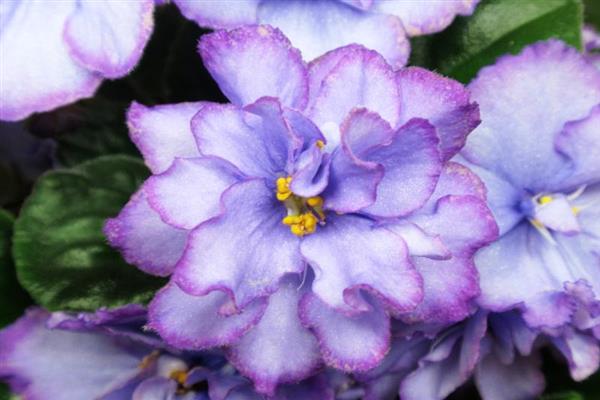
Violet Blue Eyed Russia
- Blue blood. The main difference between this subspecies is in its highly spreading bush. Flowers of this variety form large stars, with a semi-double structure and light blue petals. In the middle of the flower there is a spot of blue color with a terry edging of white tide. The rosettes have the correct shape, their color is not entirely light, but they also do not differ in brightness. The leaves are narrowed to the top, and they always have an upward direction. The roots of the plant are fibrous. The perianths of this culture are double, there are five petals on the buds.
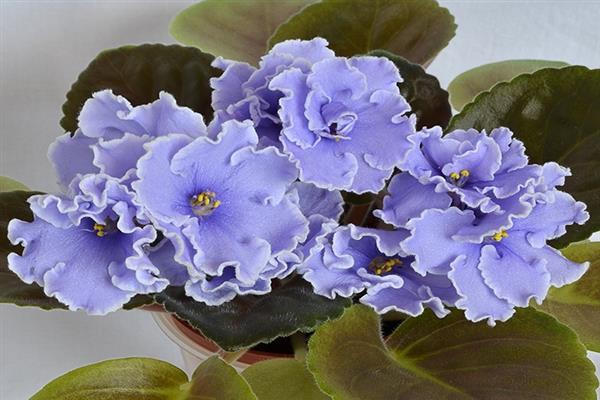
Violet Blue Blood photo
- Blue Danube. The subspecies appeared thanks to domestic breeders and differs from other subspecies in its brightness. On its foliage, there are small denticles, and the leaves themselves are endowed with a rather bright green tint, but they are matte, not glossy. The flowers are blue and up to 50 millimeters wide. Every year this culture admires with its buds, which are quite abundant, but in order for this to continue, the plant should be provided with the necessary amount of moisture and light.If you want a fairly long flowering period for this variety, then you need to maintain the correct air temperature in the room. Another plus of this subspecies is quite easy and simple reproduction by leaves.
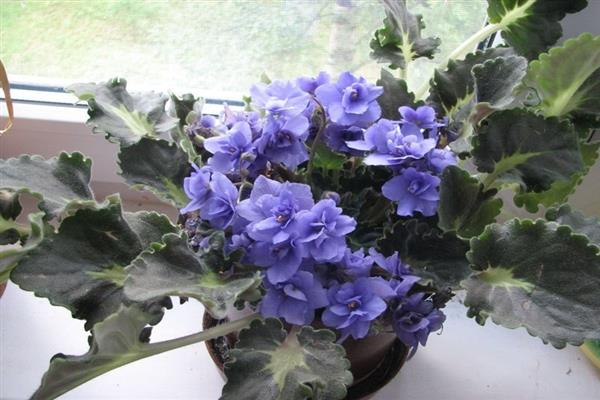
Violet Blue Danube photo
- Blue lotus. The flowers have a double structure and a star-shaped shape, with a green tint around the edges. The rosette is formed quite even and with variegated foliage colors. The appearance of this subspecies is 2013.
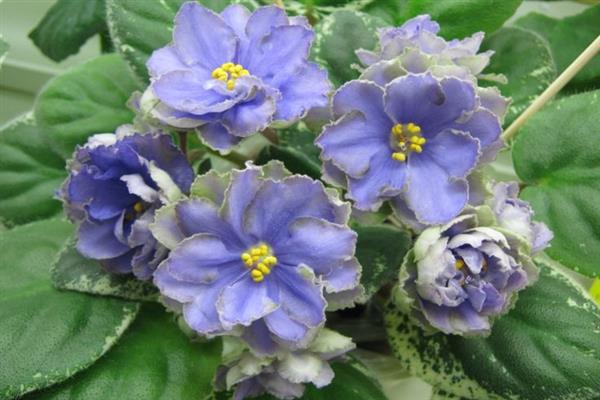
Violet Blue Lotus photo
- Blue Lagoon. This subspecies differs from other varieties in that it has large enough buds with terry, endowed with a color of intense heavenly ebb. In their shape, they outwardly resemble stars, which have a speck of blue in the middle. With insufficient illumination, the leaves of this subspecies tend upward. The flowering period for the variety lasts approximately two months. This flower is considered a rather unpretentious plant and even a novice amateur can grow it without much effort. The rosette has a medium saturation hue and is not very large. This subspecies appeared in 2005.
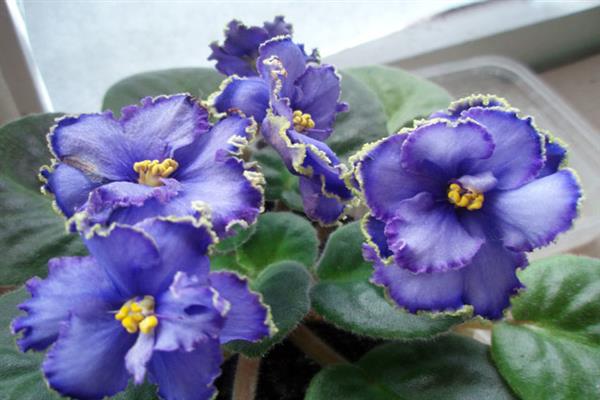
Violet Blue Lagoon photo
- Blue bird. It is considered one of the best varieties for the exhibition. It has not only a high growth rate, but also its unpretentiousness to growing conditions. With proper care, the flower will give out a fairly high-quality and beautiful flowering. The flowers themselves have terry and small ruffles. A rather wide pink border runs along the edge of the flower, and the edge itself has a combination of a greenish-white hue. The foliage is endowed with a dark green beautiful color. The period of appearance of this subspecies is 2010.
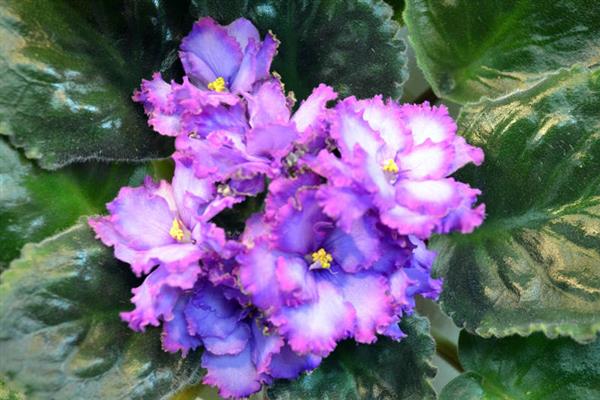
Violet Blue Bird photo
- N-Avatar. The flowers of this subspecies outwardly resemble bells, so it is rather difficult to attribute the variety to violets. The leaves of the flower have a pointed shape and a bright, variegated color. The flowering period is quite abundant, due to the formation of a large number of buds on the bush.
Violet N-Avatar photo
- Blue flash. This blue violet belongs to the early flowering varieties. It appeared thanks to the works of a domestic scientist-breeder with the surname Moreva. The main features of the variety are the wonderful shade of its leaves and the rather compact size of its rosettes. The flowers have petals with a double structure and are not very pointed upwards. The leaves have small teeth along the edge, and on the surface you can see veins of olive color. The flowers have a rather unusual shade: in their middle there is a dusting of a snow-white shade, which slowly turns into a blue color, and this is done in the form of a wave. It is impossible to catch the smell in this subspecies, although in other subspecies it is also impossible.
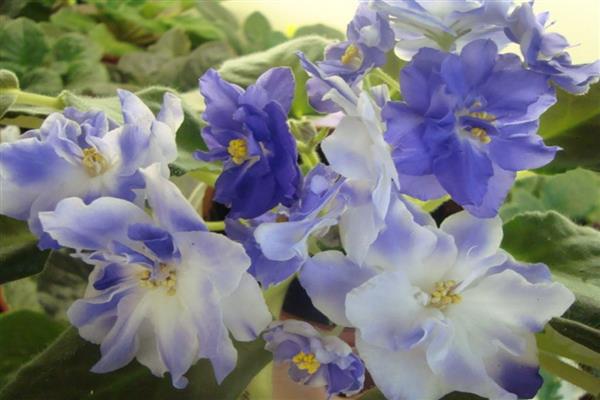
Violet blue flash photo
- Blue Dragon. The first thing that gardeners love him for is his large flowers. Indeed, with high-quality and timely care, the flowers of this variety can be up to 9 cm in diameter. It happens that these flowers have a border of a golden green hue. This subspecies appeared thanks to the efforts of the scientist-breeder from America L. Lyon, but the name was awarded to the variety in honor of the dragon, considered in Eastern mythology as a symbol of strength and wisdom. Up to 50 flowers can form on one bush at the same time. The rosette in a subspecies can in some cases reach a height of up to 45 cm. The leaves have a red color on the seamy side.
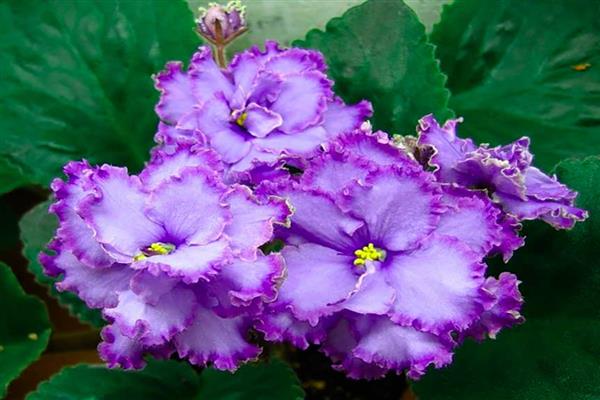
Violet Blue Dragon photo
- RM-Blue Snowdrifts. In this plant, during the period of peduncle formation, a rather thick and lush cap of large buds appears, in the middle there is a combination of shades such as blue and lilac, while the main color of the flowers is white. The rosette of this violet is not curved, and the leaves are not twisted, they have an average green tint. The flowers of this variety have a dense structure. We found out about this variety in 2015.
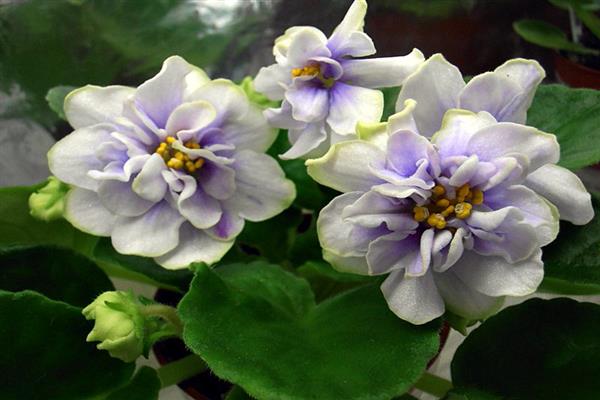
Violet Blue snowdrifts photo
- Honey Blue Ace.A flower with a fairly miniature size. The rosette can reach only up to 9 cm in diameter. The flowers have a pale bluish tint, and on their petals, in addition to everything, there is a border of light green tint. During the formation of a large number of inflorescences, a small hat of a rather beautiful green color is formed.
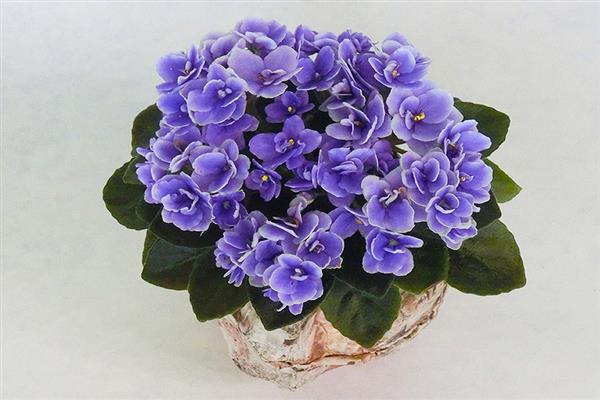
Filka Honey Blue Ace photo
- Ness Blueberry Puff. On the seamy side of the leaves of this variety, a red tint prevails, while on the front side there is a rather rich color, as if the surface is covered with gloss. The flowers have a dark blue hue and a semi-double structure.
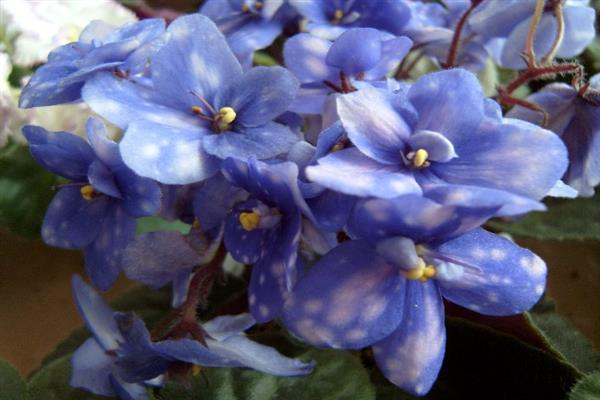
Violet Ness Blueberry Puff photo
- Valeska Blue. With its shade, this variety looks like pansy externally, since its petals are endowed with a dark purple color on top, and have a white tip from below. A large number of flowers in the hat are formed, a lush bush is formed, capable of delighting for quite a long time with its bright palette.
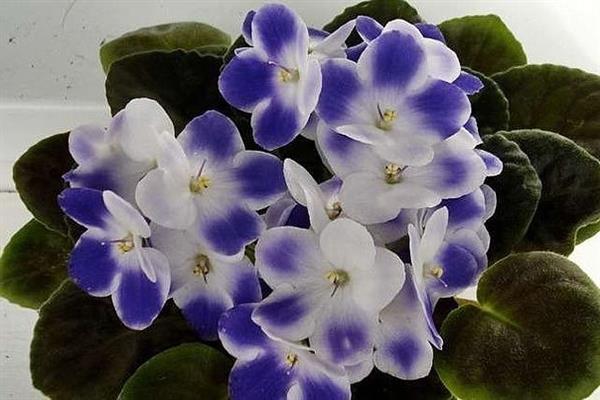
Violet Valeska Blue photo
- PT-Clouds. In this subspecies, buds of large size and double structure are formed, delighting with their intense blue tint of the petals. On the edges of them there is a border of white color, and there is also a fringe of light green color. The appearance of this plant happened in 2016, but even in such a short period of time this flower won the hearts of numerous gardeners, the unpretentiousness of this plant played an important role in this. The rosette of this culture is formed from even foliage, and in comparison with some other varieties, it is not too dark in color. The inflorescences are large and terry, endowed with a rich blue tint, there are still wavy edges of a white color and a rather thick fringe.

Violet PT-Clouds photo
- Alain Organza Blue. The main shade of the petals on these flowers is considered white, but it has an addition in the form of a spray of purple tones and a green tint on the tips. The rosette of this plant is endowed with standard sizes, and its leaves are sometimes boat-shaped. The subspecies appeared thanks to the works of the breeder A. Volskaya.

Violet Alain Organza Blue photo
- Honey Blue Angel. This blue violet has a pretty beautiful flowering period. At this time, the bush is covered with numerous buds of blue color and semi-double structure, with a white border. The foliage of this plant is endowed with an average shade of green in saturation. The rosette of the flower is small. In the middle of the flower there is an ivory shade. It is worth noting that this subspecies is quite capricious, it does not often have a flowering period and it is not an easy task to grow it.
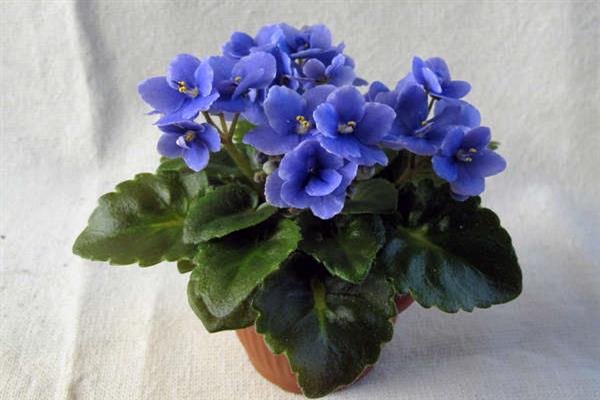
Violet Honey Blue Angel photo
- Blue Tapestry. The leaves of this subspecies are endowed with a rather intense green tint. The flowers are pink in color, but not very bright, plus there are blue droplets on the petals of these flowers, as if they were specially sprayed with a ksitochka.
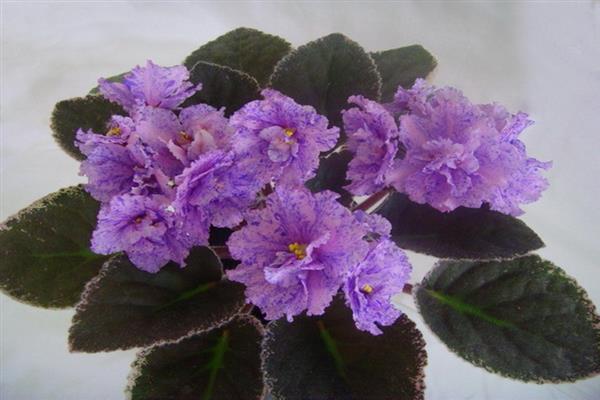
Violet Blue Tapestry Photo
- LE-Blue Buttercup. This subspecies appeared thanks to the efforts of the breeder E. Lebetskaya. Well, for a bush of this variety, flowers are quite large in size, the tips of which have a pale blue color, and there is a green edging around the edges. The violet leaves are dark in color and slightly elongated. These leaves form an even rosette.
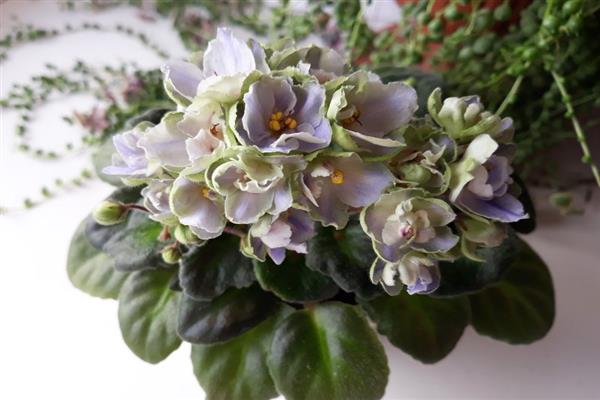
Violet LE-Blue Ranunculus photo
- LE Cornflower Blues. This blue violet has its main difference in simple buds, which have a star-shaped shape and a bluish-cornflower-blue shade of petals with a slight darkening along the edge, in the place where there is a thin line of white shade. The leaves of the variety are quite common, as is the color.
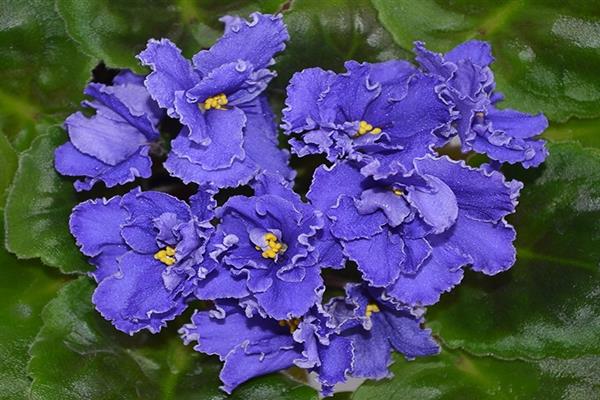
Violet LE Cornflower Blue photo
- EC-Blue Diamond. This subspecies appeared in 2004. It has star-shaped flowers and bluish-blue color. Such flowers have a rather spectacular appearance against the background of dark green foliage. This subspecies would be an excellent option for an exhibition.
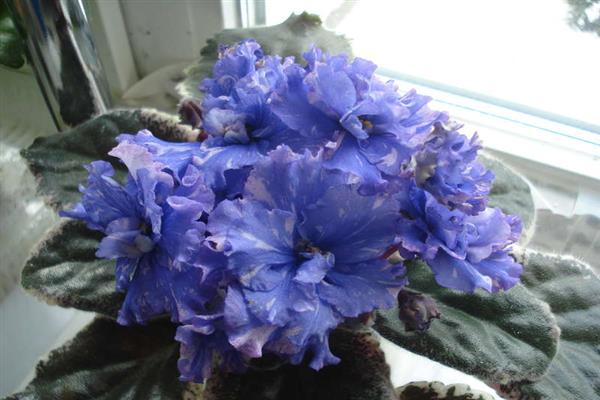
Violet EK-Blue Diamond photo
- EK-Blue Diamond. Quite a beautiful subspecies with large buds, which are distinguished by a deep purple color. The rosette of the variety is formed of medium size, with rather variegated foliage. The very first flowering of this plant is not quite luxuriant and abundant.
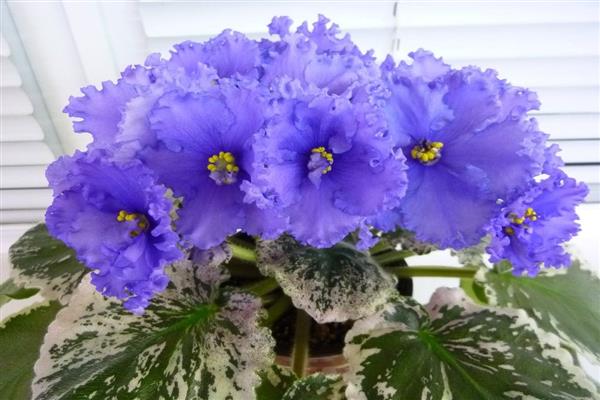
Violet Blue Diamond photo
- LE-Blue Stream. The flowers of this variety are rather large, endowed with a cupped shape, and on the seamy side they are dominated by an unusual red color. During the flowering period, a large number of buds are present on the bush, and this period lasts long enough.
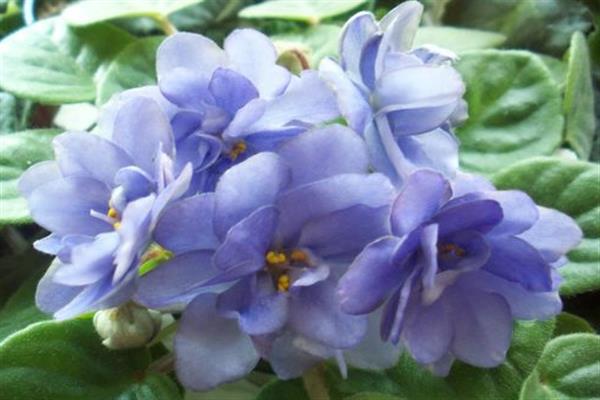
Violet LE-Blue Stream photo
- Ness Crincle Blue. Like many other subspecies, this variety has star-shaped flowers. In such flowers, the petals are blue and white at the edges. The leaves of this plant are quilted, dark green in color with slightly sharp tips. It should be said that this flower reproduces quite easily and has a rapid growth.
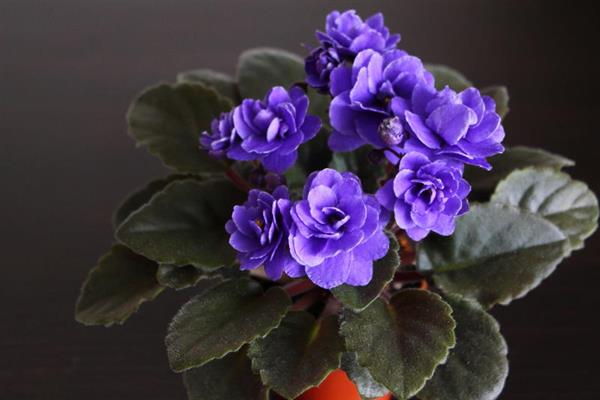
Violet Ness Crincle Blue photo
- Blue Alain-Electric. Thanks to the work of breeders, it was possible to breed this plant, which has white buds, with the presence of purple streaks. The buds are endowed with a semi-double structure, and the leaves are pale green in color. The blue violet of this subspecies fell in love with gardeners mainly for its lush flowering.
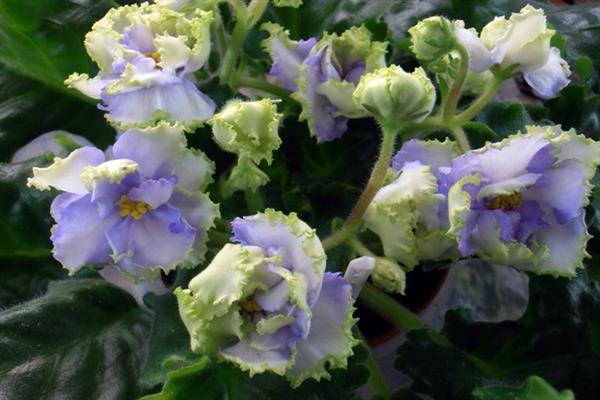
Blue Alain-Electric photo
Tips for choosing a variety
Before growing any subspecies of this plant, you should first find out about the susceptibility to diseases of this variety, as well as the level of resistance to a decrease in air temperature. Each individual subspecies is endowed with its own special characteristics and qualities. Some of the subspecies have a rather capricious disposition, which is why it is quite difficult for amateur beginners to cope with them. Thanks to the efforts of breeders, about two thousand hybrid varieties have now been bred in nature. Among the subspecies with a blue tint of flowers, you can find specimens with buds of a classic, star-shaped, limbic shape. It is worth noting that all these plants can be divided into boys and girls, and it is possible to find out their gender by the leaves. If there is a rich stain at the base of the foliage of the plant, then this is a girl. Depending on the preference of the gardener, you can make your choice in favor of a culture with a miniature size at the outlet, or a large one. Before purchasing this plant, you should first inspect the flower for the absence of specks on the foliage, or gaps between them. All these factors can indicate a flower infection. When the bush is pulled in height, it can be concluded that it was kept where there was not enough sunlight, so it becomes suspicious whether its root system is healthy under the soil. Look carefully: each container with a flower should contain information about the name of the plant and its variety, if possible, compare the plant with the picture on the Internet.
Blue violet: care
Experienced gardeners advise when growing this plant to adhere to some care features, such as:
- These asthenia are quite demanding on the composition of the soil. They will not grow in plain garden soil. Now, in specialized stores there is a sufficient selection of ready-made soil for such flowers, although you can make the desired soil mixture with your own hands. To do this, you just need to mix in equal parts perlite, loam, sphagnum moss.
- When choosing a pot for this plant, make sure there are drainage holes at the bottom. The pot can be either plastic or clay. But in the case of an earthen pot, you should look after the salting of the soil.
- This plant is placed on a window facing east or north in summer, and west or south in winter.
- This culture should have about 12-16 hours of good lighting per day, but without direct sunlight, and about 8 hours of complete darkness.If these conditions are not met, you will not see flowering.
- During watering, water should be avoided on the leaves of the plant, otherwise fungus or mold may form, and even one drop can cause a rather ugly spot on the leaf.
- Water this plant with warm water.
- Before the watering procedure, check the level of soil drying, as the plant does not tolerate too wet soil.
- At night, this flower must be removed from the windowsill, so as not to cause hypothermia. If this is allowed, then the plant will darken and dry completely in the next 24 hours.
- It is imperative to maintain a high level of humidity around these plants. Alternatively, it would be to put a small metal or plastic container filled with water and pebbles next to the flower.
- For a good flowering period, this plant must be fed. For this, it is recommended to use a balanced fertilizer specially made for indoor flowering flowers.
- Top dressing should be applied once every half a month together with watering, and the dose you prepare is 4 times less than what is stated on the fertilizer package.
- If you want to constantly observe the flowering of this plant, you should make additional lighting for the flower.
Follow these tips, and your blue violet will delight you with a rather long and beautiful flowering.

